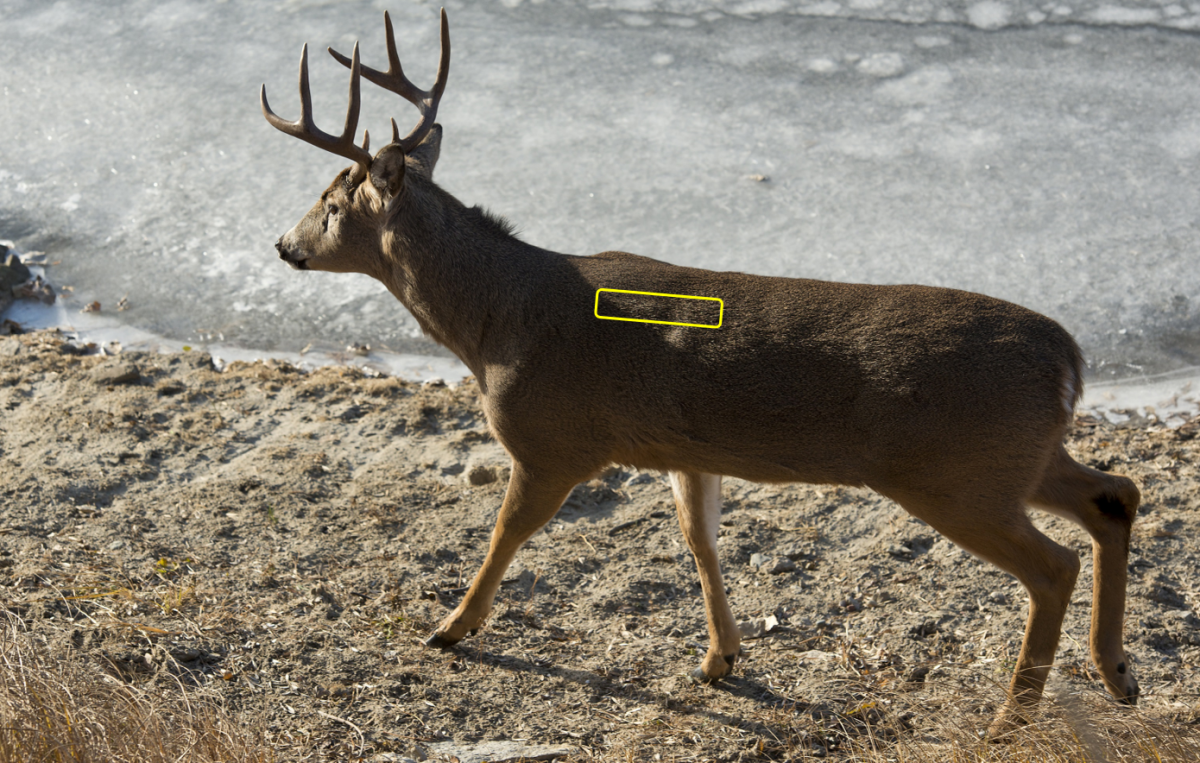Is there a “Dead Zone” or “No-man’s Land” in a deer? This question has been the topic of ongoing debates since Sacagawea lead Lewis and Clark across the western frontier. Fact is, hunters continue to agree-to-disagree about high hits in the “dead zone”. From the looks of forum posts across the World Wide Web, it appears the answer to that question depends on who you ask and what their personal experiences have been.
I have my own opinion, but I will leave it out until the end of the post. First, watch this video and then let me know which side of the spine you are on. This is the first video that I have seen that shows a dead, but live demo of inflated lungs within the thoracic cavity of a deer.
Shop the shirt here.
The evidence brought forth by this video clearly shows there is no “dead zone” between the spinal cord and the top of the lungs. In fact, the spinal cord is actually surrounded by the lungs on both sides by the way it sits lower than the top of the rib cage. So, if there is no “dead zone”, then how are deer able to live after these high hits? And they do, as many of us have stories of high hit deer that they have either killed later in the season or got trail cam pics of weeks/months later.
Enter my opinion. Remember, this is mine and does not necessarily reflect yours. I want to hear yours below. So here it goes, in my opinion there is a “dead zone” . . . just not where many hunters think it is. I believe that when hunters swear they hit the upper lungs, don’t recover the animal, and claim they hit the “dead zone”, they actually hit higher than they thought and zipped an arrow through the upper back, above the lungs and spinal cord all together. From the anatomy picture below and the video above, it is entirely possible to shoot a deer here and it lives to be hunted another day. The spinal cord actually dips lower than most people think, especially above the shoulder region.
 There’s more space above the spinal cord than one might think, especially when you are up in a treestand and viewing more of the back. Of course, the shot angle from a treestand should be in your favor on high hits, but sometimes the arrow will ricochet off the bone.
There’s more space above the spinal cord than one might think, especially when you are up in a treestand and viewing more of the back. Of course, the shot angle from a treestand should be in your favor on high hits, but sometimes the arrow will ricochet off the bone.
The factors my opinion is based on are perception and anatomy. Perception is defined as follows: a way of seeing or interpreting something; making a mental impression. Perception varies greatly amongst all humans and hunters, this cannot be argued. Some see a perfectly placed arrow, while others see the same arrow hit high as the deer “jumped the string.” Having filmed many hunts, it’s incredible what slow motion can show you.
The second perception based factor coming into play on “dead zone” hits, is the angle you are viewing a deer from up in a tree. Compared to shooting at a deer or a 3D target from the ground, you see much more of a deer’s back from up in a tree. I believe this tricks hunters into thinking their shot was closer to the center of the thoracic cavity, when in fact it was above the spine. I believe this, along with incredibly fast ducking deer, plays a part into how hunters often times misinterpret a shot, especially with a bow.
Anatomy is the second factor that leads me to believe there is no “dead zone” between the lungs and spine. The video and images are all I need to see to believe this. My idea of a “dead zone” exists above the spine.
One other quick point I wanted to mention is this topic is often discussed more heavily in bowhunting crowds. There’s a couple obvious reasons as to why this is, the first being you can see where your arrow hits. In addition to seeing your arrow, deer are often closer at the time of the shot for bowhunters, which also helps you see where you hit. The last and perhaps not so obvious factor is that it simply doesn’t happen as much to gun hunters. Reason being, the shock wave energy of a bullet hitting in that region is usually enough to disrupt the spinal cord, thus dropping him in it’s tracks. Another reason you might not find it as common around gun hunters is that they might simply chalk it up to a clean miss. Chances are there’s very little blood to follow with the high hit.
 The yellow box outlines the typical “dead zone” or “no-man’s land” where hunters sometimes hit and the deer survive.
The yellow box outlines the typical “dead zone” or “no-man’s land” where hunters sometimes hit and the deer survive.
All that said, deer are incredible animals and seem to survive the craziest stuff. Therefore, they can and do survive some good hits from time to time and recover perfectly. They are amazing and sometimes there’s just no explanation.
What’s your opinion? Have you ever shot a deer in the “dead zone?” Did you recover it? Did it heal and live another day? The more evidence and experiences you share, the better hunters we all become! So, is there a “dead zone”?







